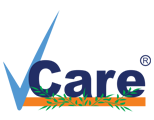Trichoscopic Analysis
Trichoscopic hair analysis is a computerized method to determine hair density and the status of hair roots and scalp conditions. It also evaluates hair thinning, which reveals your hair structure. It calculates responses to treatment in patients with pattern alopecia, enables a precise follow up of hair densities and much more. This is especially important, as any therapy against hair loss extends over a longer period of time and the therapy success is visible after months. In general, analysts examine a number of different characteristics of hair under a microscope like hair count, its density, and the phase of hair growth level (Anagen, Telogen) and type of hair (vellus, terminal) ratio and dandruff problem that cannot be seen through our naked eyes. The ideal number of hair from one pore to another is (3 to 4 hairs from one pore) and the distance between each pore is also examined under this analysis.

Hair and Scalp examination includes the inspection of hair color, texture, fragility, erythema and scales, and examination of the hair root. In addition to the scalp, other areas are examined for hair loss (including eyebrows and eyelashes). The initial diagnosis was made for all of the cases, that is, Tinea capitis, Alopecia areata, Trichotillomania, and Traction alopecia. Trichoscopic examination is done for all cases looking for specific diagnostic finding for each case of hair loss.
Trichoscopy is a handheld Trichoscope application that captures images and is now being evaluated as saved photos on the computer screen. This Trichoscope can block light reflection from the skin surface without immersion gels or alcohol. The dates and times of photo captured have been stored automatically.


 Our Location
Our Location
